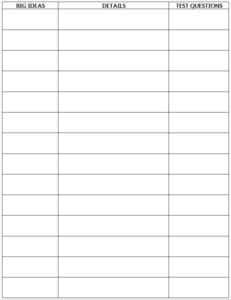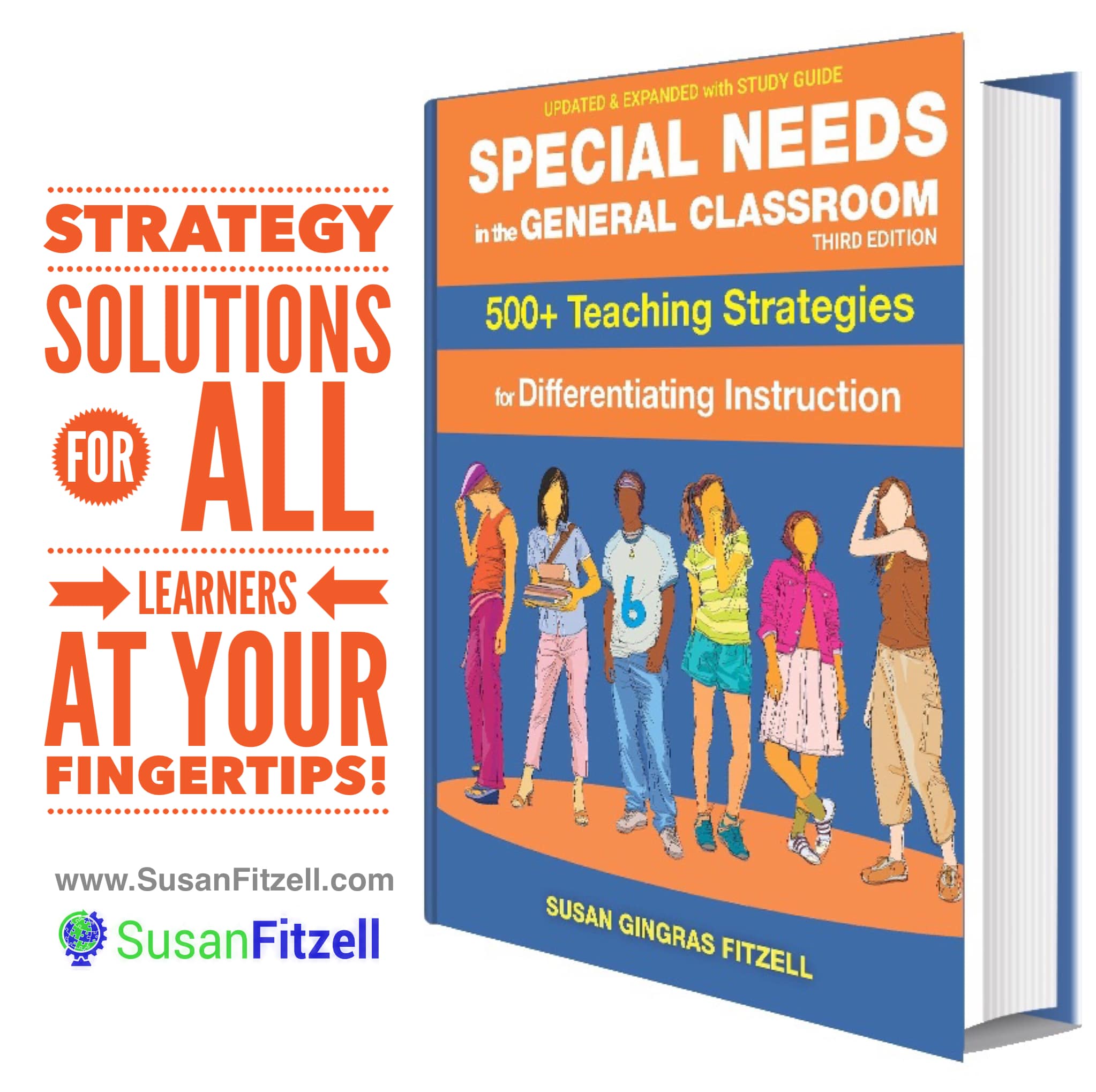Wednesday, February 22, 2017
Many teachers use a two-column note taking strategy when giving notes to students. However, a colleague of mine takes this up a level by adding an additional column. That third column is used for test questions.
Here’s how it works:
 The first column is for the big ideas, also known as the main ideas that a student needs to glean from a lecture or their reading materials.
The first column is for the big ideas, also known as the main ideas that a student needs to glean from a lecture or their reading materials.
The second column is for details that support the big ideas. We might call this evidence, supporting information, references, etc.
In the third column, students review the material in the first two columns and create test questions based on that information.
To create test questions from the material written in the first two columns, students must not only comprehend the information, but determine what’s important. A study based out of the University of Michigan’s School of Dentistry, suggested that “student-driven, collaborative assessments can be an important tool for building critical thinking skills […]” (Gonzalez-Cabezas, Anderson, Wright, & Fontana, 2015)
It takes skill to write a good question. So, another option would be for the teacher to go over potential questions with the students before they write their own questions in the third column. For students to create a good question. they need to be able to key in on the important information and critical concepts. They might also need to understand relationships between diffeent concepts in the notes(Isabel Gauthier, 2010)
When students create questions, there is also the opportunity for them to relate their questions to their own experiences. This then hooks that information into long-term memory because students are relating new knowledge with previous knowledge. (Arie van Deursen, 2016)
Take it up one more level: Use only one side of the paper for the three column notes. Use the other side of the paper to illustrate the notes!
Excerpted from Special Needs in the General Classroom, 500+ Teaching Strategies for Differentiating Instruction.
 For more information on differentiation strategies to reach ALL learners, see
For more information on differentiation strategies to reach ALL learners, see
Susan Fitzell’s NEW book, Special Needs in the General Classroom, 500+ Teaching Strategies for Differentiating Instruction.
Available now for pre-order!
Bring Susan to your campus!
New seminar with this book – Available May 1, 2017
Differentiation Strategies to Reach ALL Learners in the Inclusive Classroom
Copyright © 2000-2013 Susan Fitzell & Aim Hi Educational Programs, LLC
#####
Susan Fitzell, M. Ed, CSP, is a nationally recognized presenter, author of nine books for teachers, trainers, and parents, an educational consultant, and CEO of Aim Hi Educational Programs, LLC. As an independent consultant and coach, Susan offers the personalization, continuity, and consistency necessary for true change in any organization. She works side by side with teachers, school administrators, and business leaders as a coach and trainer, employing Brain Power strategies that take learning to the next level.
Disclosures and Permission to Reprint
For more information, visit Susan's website at www.susanfitzell.com or click here for more great articles.